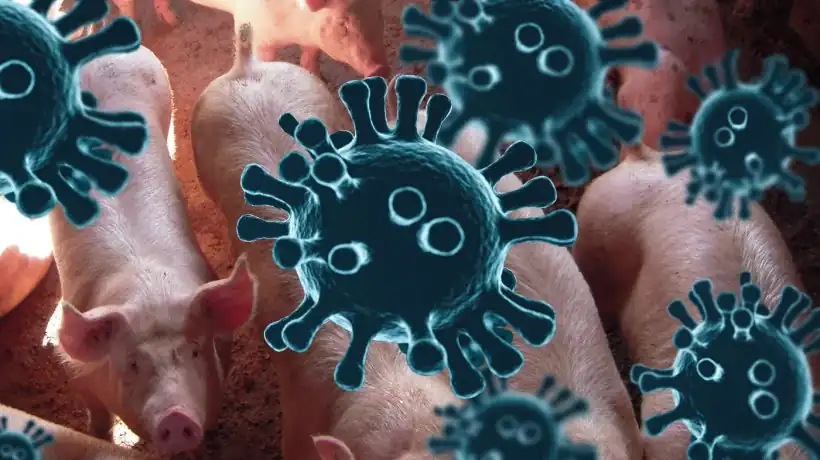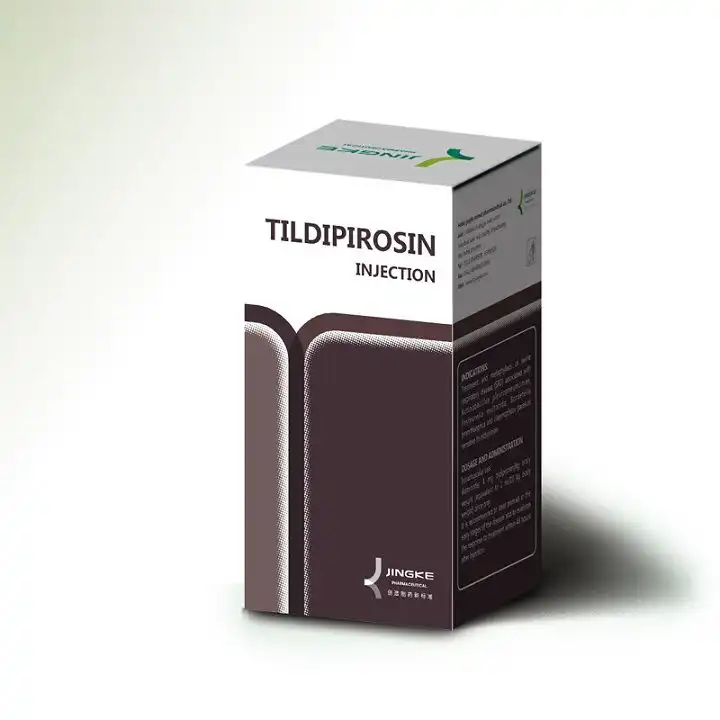Tildipirosin’s Chemical Structure and Pharmacological Properties
Tildipirosin is a novel macrolide antibiotic primarily used in the veterinary field. Its chemical structure features two piperidine substitutions at the C20 and C23 positions, along with a mycarosyl-lactonic ring attached at the C5 position. This unique tribasic molecular structure endows it with high pharmacological activity. Tildipirosin is mainly used for the treatment and prevention of respiratory diseases in cattle and pigs, possessing numerous advantages such as anti-resistance properties, low dosage, single administration, low residue, and being exclusively for animal use.
Compared to other macrolide antibiotics, tildipirosin exhibits higher bioavailability (78.9%) and an ultra-long half-life (9 days). This allows it to maintain an effective therapeutic concentration in the body for an extended period, thereby achieving better bacteriostatic and bactericidal effects. Tildipirosin is effective against Gram-positive bacteria, mycoplasma, chlamydia, and other pathogenic microorganisms. It is administered as a single subcutaneous injection to prevent and treat swine and bovine respiratory diseases. Simultaneously, it minimizes the number of treatments required for animals, reducing stress responses.
Synthesis Methods of Tildipirosin
Currently, there are two main synthetic methods for tildipirosin: one involves reacting 20,23-diiodo-5-O-mycarosyl-tylonolide with piperidine in acetonitrile solvent; the other starts from tylosin and its salts through a multi-step reaction. The following provides a detailed description of an efficient synthetic process.
First, tylosin (I) is used as the starting material and reacted with an inorganic or organic acid in an aqueous solution to generate 23-hydroxy-20-piperidinyl-5-O-mycarosyl-tylonolide (II). The key to this step is controlling the pH and reaction temperature to ensure product yield. Subsequently, the 23-hydroxyl group is sulfonated to produce 23-sulfonyloxy-20-piperidinyl-5-O-mycarosyl-tylonolide (III). This step uses sulfonyl-containing compounds such as triflic anhydride or p-toluenesulfonyl chloride under basic conditions.
Next, an iodination reaction is carried out to convert the 23-sulfonyloxy group to a 23-iodo group, yielding 23-iodo-20-piperidinyl-5-O-mycarosyl-tylonolide (IV). Iodinating reagents such as hydroiodic acid or potassium iodide play a crucial role in this step. Finally, a piperidinyl addition reaction transforms the 23-iodo group into a piperidinyl group, generating 20,23-dipiperidinyl-5-O-mycarosyl-tylonolide (V), which is tildipirosin. This final step proceeds under mild reaction conditions with high yield, making it suitable for large-scale production.
Application Value of Tildipirosin

As a highly effective veterinary antibiotic, the application value of tildipirosin is mainly reflected in the following aspects: Firstly, it has a broad application scope, being effective against various pathogenic microorganisms, particularly excelling in the treatment of respiratory diseases in cattle and pigs. Secondly, the low residue characteristic of tildipirosin gives it a significant advantage in terms of food safety, meeting the stringent requirements for drug residues in modern animal husbandry.

Furthermore, the ultra-long half-life and high bioavailability of tildipirosin allow for reduced dosing frequency during treatment, lowering stress responses in animals and thereby improving therapeutic outcomes. Currently, tildipirosin has been widely used in clinical veterinary practice in foreign countries, but it has not yet been launched in China, indicating significant development potential and market prospects.
Technical Advantages of Tildipirosin Manufacturers
As a professional tildipirosin factory, our production technology possesses significant advantages. Firstly, we have optimized the synthesis process, reducing the formation of by-products and improving product yield and purity. Secondly, we employ environmentally friendly post-processing methods, avoiding the use of toxic reagents and minimizing environmental pollution. In addition, our production process is simple and easy to implement for industrial-scale production, with low costs and significant economic benefits.
Our company is a leading tildipirosin manufacturer with complete equipment and advanced technology capable of meeting large-scale production demands. Our products boast high purity and stable quality, earning the trust of our customers. Simultaneously, we are committed to researching new synthetic methods to further enhance the production efficiency and application value of tildipirosin.
Other Service Introduction
The company’s own pilot plant is located in Shijiazhuang, Hebei, equipped with multiple sets of 3000L, 2000L, 1000L, and 500L multi-functional reactors. We possess several sets of self-developed and assembled tubular reactors, as well as post-processing equipment such as freezing, plate and frame filters, centrifuges, and dryers, providing multi-functional reaction pilot conditions. We excel in reaction types including ultra-low temperature, high temperature, high pressure, nitration, oxidation, and continuous distillation. Batch sizes range from hundreds of kilograms to tens of tons. We welcome global partners to conduct pilot trials or develop microchannel processes with us.

